calsfoundation@cals.org
White Oak Lake State Park
| Location: | Ouachita and Nevada counties |
| Size: | 725 acres |
White Oak Lake State Park in Ouachita and Nevada counties in southwest Arkansas provides access to fishing on White Oak Lake and other recreational opportunities, including camping, picnicking, hiking, and interpretive programs. The lake contains bass, crappie, catfish, and bream, and the park is also rich in wildlife, including great blue herons, egrets, ospreys, green herons, and bald eagles.
The land that is now White Oak Lake and White Oak Lake State Park was acquired by the federal government in the 1930s through the Bankhead-Jones Farm Tenant Act of 1937. This act was intended to assist farmers during the Depression by making it possible for them to own land rather than continuing in tenant arrangements. In 1957, the State of Arkansas acquired this land and designated it for recreational and conservation purposes. The Arkansas Game and Fish Commission (AGFC), in cooperation with the Arkansas State Parks Division, built the lake in 1961. It consists of two sections: a 1,031-acre upper lake south of Arkansas Highway 387 and a 1,735-acre lower lake north of the highway. In November 1964, the commission leased land for a shoreline park along the lower lake to the Arkansas Publicity and Parks Commission (now the Arkansas State Parks, Recreation and Travel Commission). The park, then covering 510 acres, officially opened on April 1, 1967. It received official legislative approval as a state park by Act 192 of March 7, 1969.
Since opening, the park has experienced two significant periods of further development and renovation. The first was financed by legislative appropriations in 1977 and completed in 1980. The second resulted from the state’s Amendment 75 Conservation Tax, a one-eighth-percent sales tax approved by voters in 1996, and included a complete renovation of the park’s campground that was completed in June 2000.
Park facilities include a visitors center and store; a marina with rental fishing boats, party barges, canoes and other watercraft; a campground; a picnic area with a pavilion; and a playground. Center exhibits include an interactive video exhibit and information on the Red River Campaign of the Union army during the Civil War.
In places along the park’s three woodland trails, white sand can be seen on the forest floor, remnants of the time when the Gulf of Mexico covered much of what is today the southern United States, retreating southward sometime between forty and sixty million years ago. Hikers also experience on these trails a dramatic transition of forest and ecotype systems, moving from bottomland hardwoods to loblolly pine forest. The unusually diverse animal life and plant life, as well as the wealth of fishing opportunities, make the park attractive to a wide range of visitors.
About 70,000 people visit the park each year to fish, hike, camp, and picnic. The park also enjoys strong local support, including contributions from the group White Oak Lake Friends (WOLF).
For additional information:
Arkansas State Parks–White Oak Lake. http://www.arkansasstateparks.com/whiteoaklake/default.aspx (accessed September 14, 2022).
Staff of the Arkansas Department of Parks and Tourism
Staff of the CALS Encyclopedia of Arkansas
 Birds
Birds Recreation and Sports
Recreation and Sports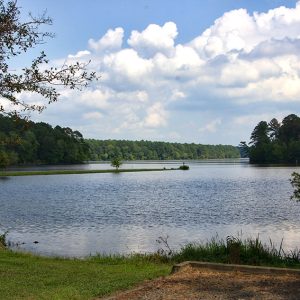 White Oak Lake Campground
White Oak Lake Campground 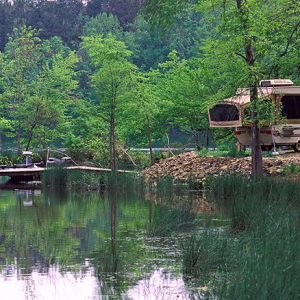 White Oak Lake State Park
White Oak Lake State Park 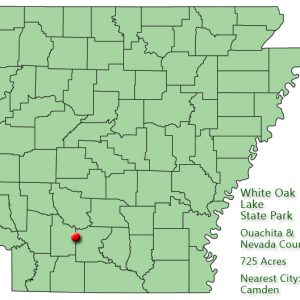 White Oak Lake State Park: Park Location
White Oak Lake State Park: Park Location 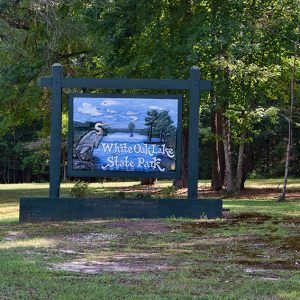 White Oak Lake State Park Entrance
White Oak Lake State Park Entrance 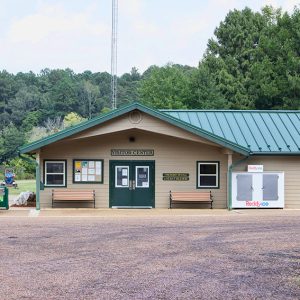 White Oak Lake Visitor Center
White Oak Lake Visitor Center 




Comments
No comments on this entry yet.